Here's what we'll cover
Here's what we'll cover
Here's what we'll cover
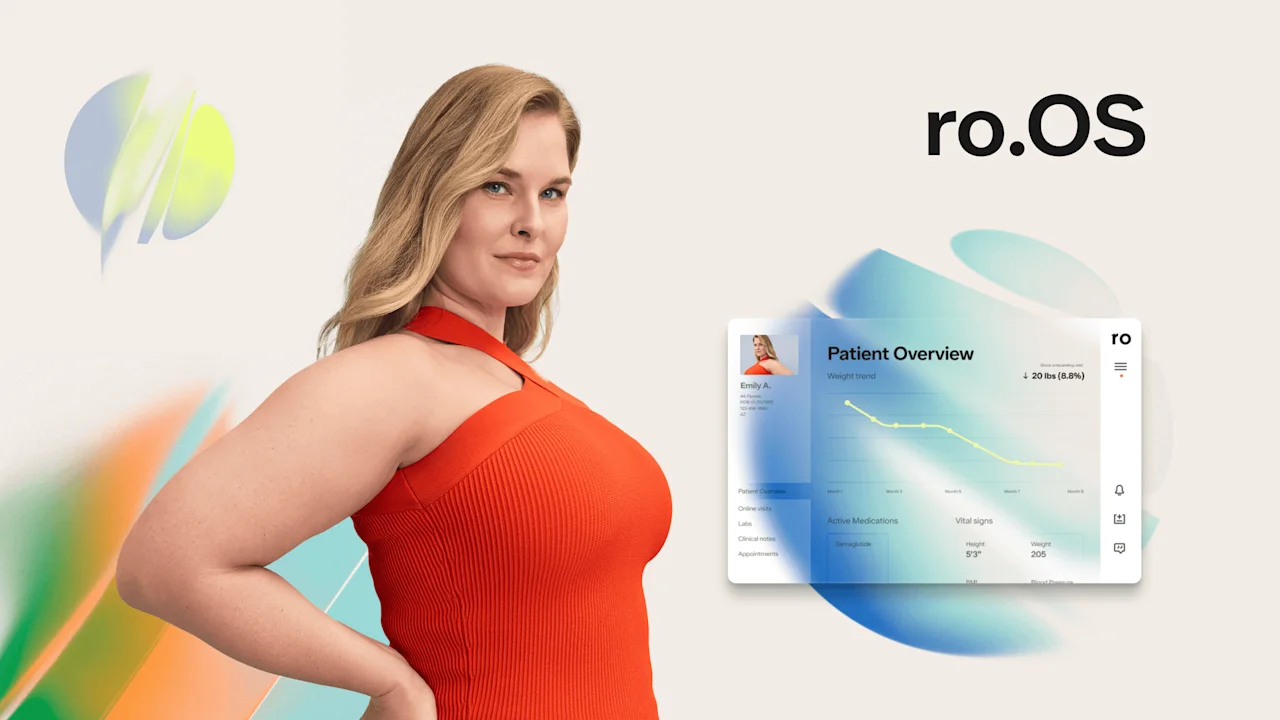
Today we’re unveiling the Ro Operating System (ro.OS), our technology platform designed to help millions of patients achieve their health goals. But, while ro.OS debuts today, it’s actually been in the making for over six years – and I couldn't be more proud of what we’ve built.
Before I dive into all that ro.OS has to offer, let’s answer an important question: Why did we build this technology?
Ro believes that, today, high-quality care is a handmade luxury good.
The U.S. healthcare system can deliver high-quality care. What it doesn’t do well is make it convenient or, unfortunately, even an option available for every patient. The most inconvenient truth is that there are too many people who need care and too few to provide it. We face a growing population with an increasing demand for (primarily chronic) care, while simultaneously dealing with a worsening shortage of already burned out providers. This is a supply v. demand problem that we believe can be solved only by unlocking greater leverage through technology.
That’s where technology can play a role. As a society, the way we have turned luxuries that only the few can access into commodities that anyone can access is with technology. From the printing press to the automobile to the iPhone.
This is what we set out to do at Ro.
For many, this idea of scaling healthcare makes them uncomfortable. The healthcare system is obsessed with quality (rightly so), but is not equally obsessed with scalability. The idea that a provider might be able to 10x the number of patients they see in a day using technology – while meeting or exceeding the same bar for quality, and doing the same for provider satisfaction – seems impossible.
It is possible. It just takes innovation. We want to make it as easy as possible for millions of people to access the most effective healthcare.
How we build
This possibility is what Ro’s team has spent years laser focused on. We challenged ourselves to build technology that enables Ro to improve:
Ease: Patients already have enough to deal with in their lives, and it’s on builders in the healthcare system to reduce every ounce of friction to give patients access to the care they want and need.
Efficacy: Not only do we want to make healthcare easy to access, but everyone deserves access to the most effective healthcare–measured by both health outcomes and quality of life (i.e., is the patient achieving their goals).
Scalability: It’s not enough to make it easy for thousands or tens of thousands of the few and fortunate to access the most effective care, but rather, we must obsess over making this kind of care available to tens of millions. Otherwise, high-quality healthcare will remain a handmade luxury good.
Importantly, building toward each of these isn’t mutually exclusive. In fact, it’s the opposite. It’s the constraint of requiring all three simultaneously that leads to creativity and invention. This is core to the ro.OS ethos: everything we build is centered around ease, efficacy, and scalability.
The easier it is for a patient to report a side effect (for instance, with Ro’s automated check-ins), the greater the chance they get help from a provider to manage it (vs. not reporting it at all). The easier it is for a provider to review a patient’s individual medical history and identify any unique risks (for instance, with Ro’s dynamic online visits), the more they can focus on creating a treatment plan tailored to the patient’s goals. Each of these measures of ease can have an effect on the efficacy of care.
Similarly, how we went about building was not uniform. In some cases, we re-designed and remade existing healthcare technologies. For example, electronic medical records (EMRs) have a reputation for their burdensome UX and prioritization of coding and billing for care over actual care delivery. Contributing to the prevalence of burnout and ‘pajama time’ spent dealing with administrative tasks after hours. So we built our own. Now with just a few clicks, Ro-affiliated providers can review a patient’s medical history, evaluate lab results, or add clinical notes that can be shared and discussed with Ro’s pharmacies. This means that providers can efficiently and effectively deliver, document, and coordinate patient care–and continue to enjoy the practice of medicine and time with their families.
In other cases, we started from scratch to create and scale new kinds of patient experiences. For example, completing lab tests is often a barrier for patients. Ro offers patients the easier option of getting an at-home collection kit delivered directly to their door, to be completed at their convenience, and returned to any UPS location nearby. This means the same quality of diagnostic testing and automatic delivery of results without all the hassle of scheduling and making time to visit a brick-and-mortar lab (don’t worry, that’s still an option for patients with Ro if they prefer it).
One thing that held true throughout was always building through the lens of a patient’s goals. The traditional healthcare system is system-centric – organized around specific facilities, specialties, and payers. This puts the responsibility on patients to figure out what to do, who to see, and where to go. Ro builds around a patient’s goals: I want to lose weight, have a child, clear up my skin, or have better sex. We bring together everything a patient needs to achieve their goal from end-to-end, every step of the way.
Introducing ro.OS
The end result is ro.OS, our platform that vertically integrates the core parts of the healthcare system through four end-user applications:
The Patient App
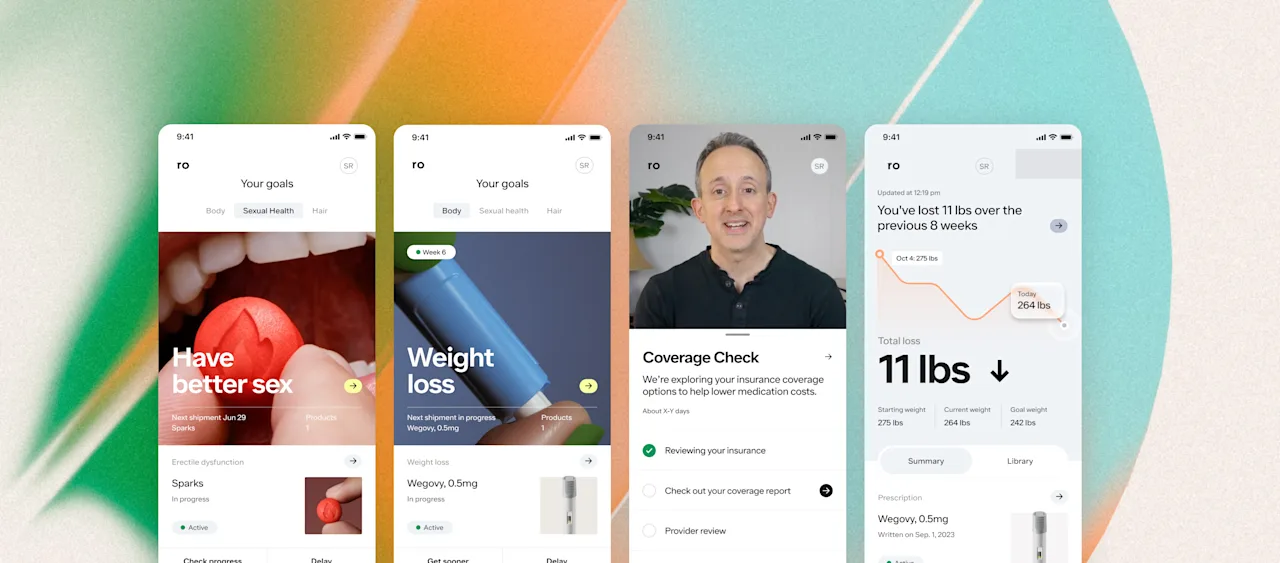
The Patient App puts patients in control of their care every step of the way. It is a single stop for patients to message a provider, report a side effect, track progress, access medical records, and manage goals.
The Care Delivery App
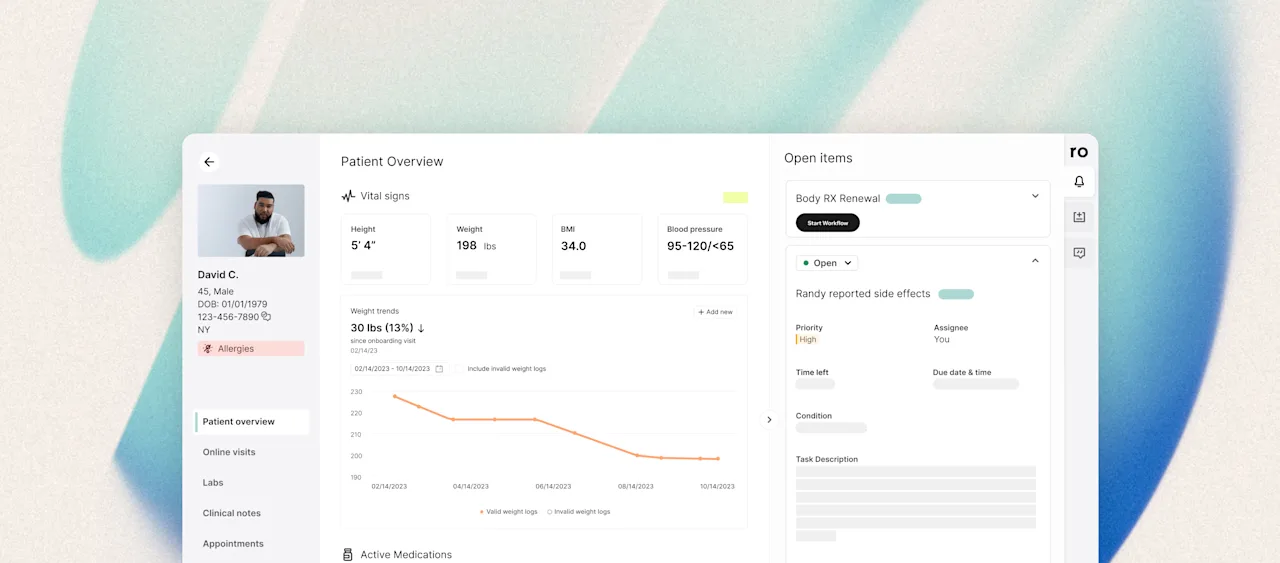
The Care Delivery App is a provider’s homebase for effectively delivering, documenting, and monitoring patient care. Whether counseling a patient, reviewing lab results, or making changes to a treatment plan, providers benefit from tools that surface the right information at the right time, scale their expertise, and support the quality and safety of care.
The Pharmacy App
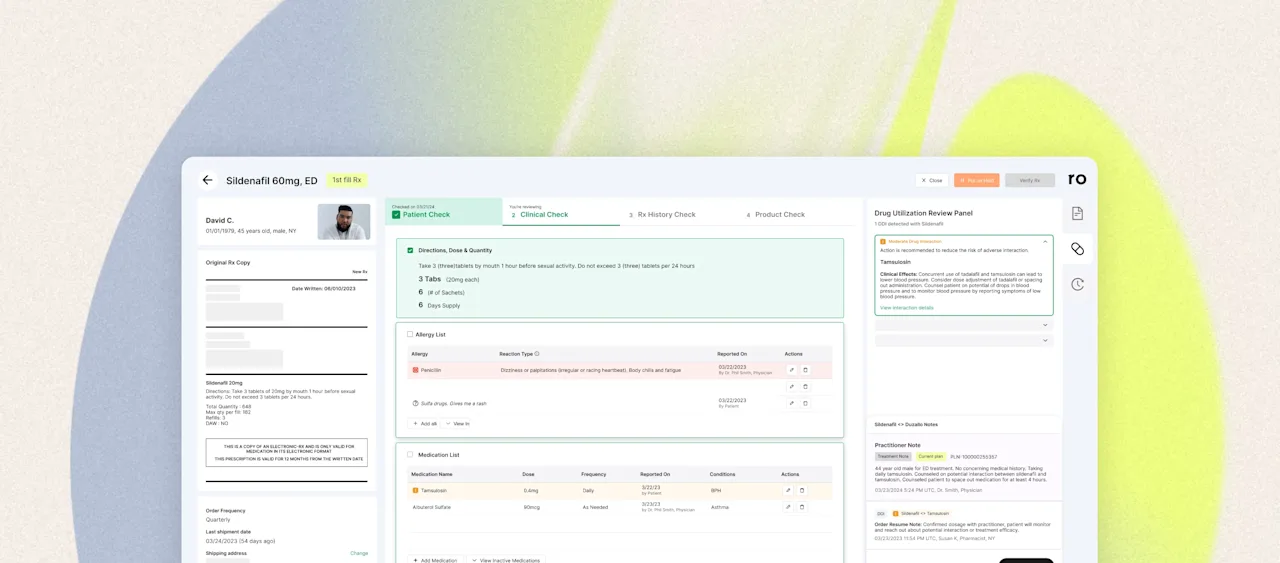
The Pharmacy App integrates pharmacists directly into a patient’s care journey so that they get real-time patient insights and can proactively coordinate with providers, identify potential safety concerns, and offer fast and reliable nationwide medication fulfillment.
The Lab App
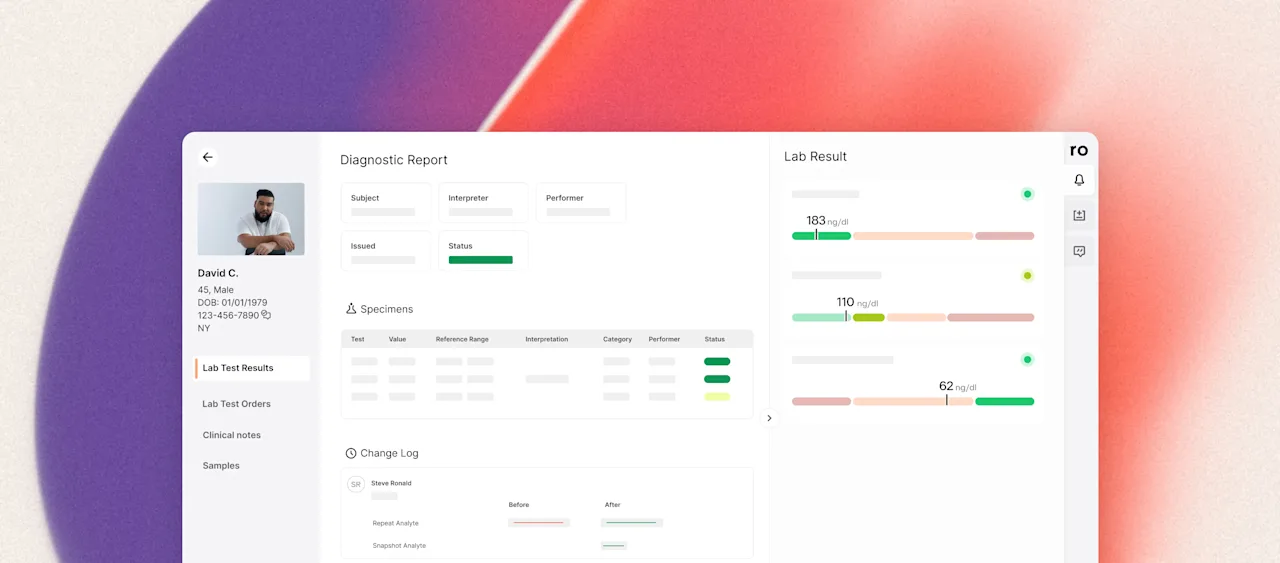
The Lab App integrates testing into a patient’s journey, offers them with at-home or in-person options, and offers automated results delivery. Together, this helps patients get a full picture of their health and providers make more informed treatment decisions.
The ro.OS, these four applications as well as the suite of proprietary tools and services housed within them, have helped Ro deliver on that promise of making it easier for more patients to get the effective care they need. So far, we’ve helped millions of patients, delivered tens of millions of treatments, and facilitated hundreds of millions of care interactions.
And we’re just getting started.